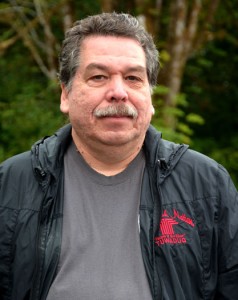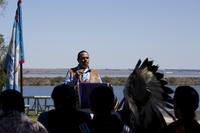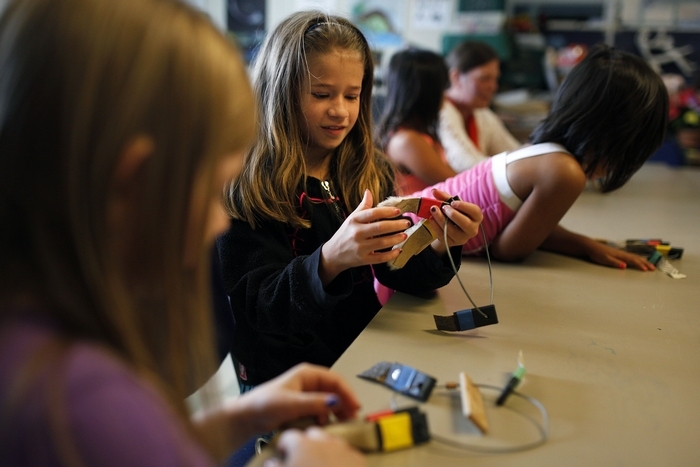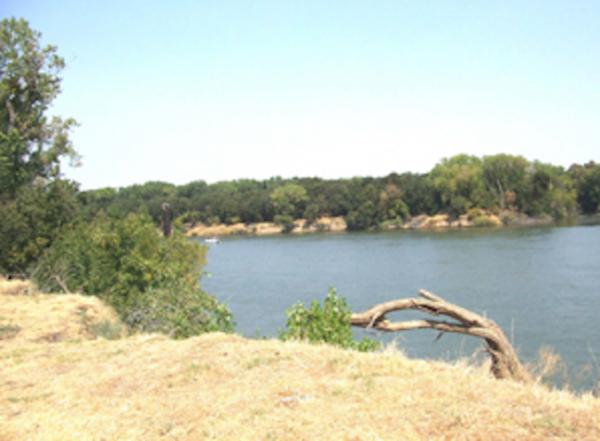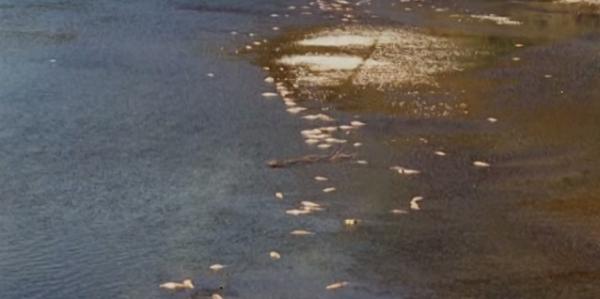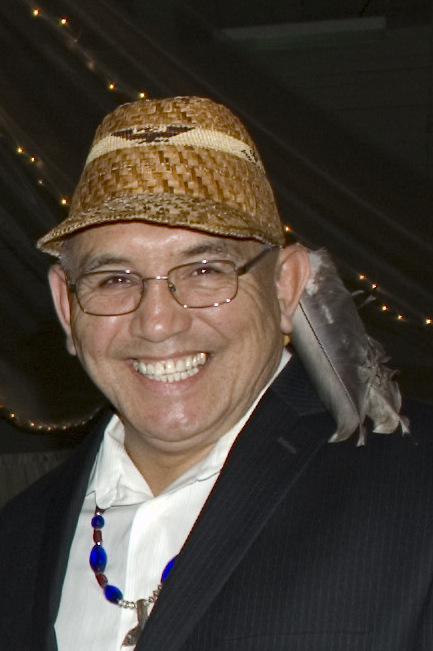Remarks as Prepared for Delivery
Thank you, Carlie for that kind introduction and for hosting this important gathering along with U.S. Attorneys Judge Leonardo from the District of Arizona, John Walsh from the District of Colorado, and Damon Martinez from the District of New Mexico.
With the Native America Issues Subcommittee of the Attorney General’s Advisory Committee meeting here today, we are fortunate to have over a dozen additional U.S. Attorneys in attendance. Thank you all for your commitment to serving Indian Country in your districts.
I am so pleased to be with you at this twenty-second convening of Four Corners Conference. For over two decades, this conference has provided federal and tribal leaders, social service providers, law enforcement officers, judges and prosecutors with a unique opportunity explore ideas, share best practices and forge critical collaborations that help us move forward in our common desire to make Indian Country safer and stronger.
Two years ago, I had the privilege of speaking to this Conference when you gathered in Pojoaque Pueblo, New Mexico. I said at that time ours was a moment of hope, challenge and opportunity, as we confronted the reality of alarmingly high rates of violence against Native women and girls in Indian country.
You’ll recall that at that time, the reauthorization of the Violence Against Women Act – or VAWA 2013 – hung in the balance. And notwithstanding efforts by the Justice Department, led by Attorney General Eric Holder, to push forward legislative recommendations that would enhance the ability of tribes to protect Indian women from domestic violence, the outcome of that effort, you’ll remember, was far from certain. In fact at times, it looked as if VAWA would not be reauthorized by Congress for the first time in nearly twenty years.
But thanks to the many courageous Native women who stood up and spoke out and told their stories of pain and heartache; thanks to the many tribal leaders who said enough is enough, that whether a Native woman receives justice should not depend on the race of her perpetrator; indeed, thanks to many of you in this room today, together we met that challenge and today VAWA 2013 remains the law of land, and now with additional statutory tools for both Federal and tribal governments to prosecute intimate partner violence.
And VAWA’s reauthorization was just the latest in what has been a remarkable surge in positive federal activity in Indian Country over the last five years, a commitment that began with Attorney General Holder’s convening of over 500 tribal leaders for a listening session in his first year of office.
It’s a commitment we reflect in the litigation positions we take as a Department – from our work to resolve decades-long, painful disputes like the Cobell tribal trust litigation and the Keepseagle Native American farmers discrimination lawsuit; to our repeated court filings in support of presumptive tribal jurisdiction over Indian child-custody proceedings, even though our arguments do not always prevail, because standing up for ICWA means standing strong for tribal sovereignty.
In fact, earlier this month, the Department took a strong stand on behalf of Indian children and their families involved in state child welfare proceedings in a South Dakota federal court. We filed a brief in the case out of concern for the harm to Indian families that even the temporary removal of their children can cause. This case could set important precedent regarding how the emergency removals and placements of Indian children are to be handled and how ICWA is interpreted.
Our commitment to Indian Country has likewise led us to create CTAS, an effort to streamline the way we administer Justice Department grants to tribal grant applicants.
And that commitment is made manifest in the tireless work of so many federal investigators, AUSAs and SAUSAs throughout the nation — including many of you here today – to enhance public safety on tribal lands throughout Indian Country – efforts that have resulted in a remarkable 34% increase in Federal criminal prosecutions in Indian Country since 2009.
Indeed, today, the Justice Department is releasing its second Indian Country Investigations and Prosecutions report to Congress, and it reflects this Administration’s commitment to public safety in Indian Country. Although declination rates alone are not the best way to measure the success of our law enforcement efforts, the report show that with few exceptions, areas where the largest populations of American Indian people live and suffer from the most serious crime rates – such as here in the Southwest and in the Northern Plains states – federal declination rates were among the lowest in the nation.
So we’ve come a long way and made a lot of progress in a relatively short period of time. We are witnessing an unprecedented era of collaboration among U.S. Attorneys’ offices and tribal law enforcement and prosecutors across the country.
Yet it’s in that success that lies our greatest and perhaps most difficult test: How do we take the success we’ve achieved over the last five years and make it sustainable over the long term?
I believe solidifying those gains requires us to double-down on the collaborations that enhance tribal public safety; to expand the culturally-informed law enforcement training we’ve conducted; and to encourage and incentivize interdisciplinary approaches to violence reduction.
What’s essential to our long-term success is for us – at the federal, tribal, state and local levels — to takes steps that will institutionalize our commitment to Indian Country public safety, such that the best practices you are sharing, the promising pilot projects you’re launching, the interdisciplinary collaborations your spearheading – they need to become part of the routine work we do to pursue effective law enforcement in Indian Country so that the impact you are having will continue to be felt for years, even generations to come.
Our dedication to Indian Country must be transformed from an initiative defined by the contours of any one Administration’s commitment and ingrained into the DNA of federal law enforcement practice. It must be part of the yardstick by which we measure our own success or failure as federal law enforcement professionals.
So what does institutionalizing our commitment to justice in Indian Country look like? I think there are three areas that illustrate this, and they are areas where I am pleased to report we are making good strides.
First, institutionalizing our commitment means enhancing our existing collaborations between tribal and federal law enforcement, and a good example comes from our recent experience with VAWA.
As soon as VAWA’s reauthorization was signed into law, the Justice Department ’ s leadership engaged in an expedited but extensive consultation with tribal officials on how best to implement VAWA’s newest provisions dealing with tribal special criminal jurisdiction.
We came up with a voluntary Pilot Project that allowed some tribes to begin exercising that jurisdiction earlier this year – ahead of law’s March 2015 effective date – if the tribe’s criminal justice system has adequate safeguards in place to protect defendants’ rights. Six months ago, I authorized three tribes – the Pascua Yaqui Tribe of Arizona, the Tulalip Tribes of Washington, and the Confederated Tribes of the Umatilla Indian Reservation – to become the first tribes in the United States to exercise special domestic violence criminal jurisdiction.
And importantly, while these tribes have moved swiftly, they have also acted with deliberation to combat domestic violence by protecting the safety and rights of victims, while simultaneously safeguarding defendants’ rights. They are closely coordinating with their local U.S. Attorneys’ Offices to identify those cases that are best handled in tribal court and those which are more appropriate for federal prosecution. Here in Arizona, for example, the Pascua Yacqui Tribe worked with the United States Attorney ’ s Office to refer four of the 12 non-Indians arrested by the tribe for federal prosecution.
Other tribes are also carefully preparing to exercise the new jurisdiction. Since June of last year, 39 tribes have voluntarily joined the Department’s Intertribal Technical-Assistance Working Group, working with Department officials and other tribes in an effort to exercise effectively the new special criminal jurisdiction in 2015.
And as more tribes step up to assume this new exercise of sovereignty, more Tribal-Federal partnerships will be established; more interdependence and collaboration on public safety matters will result; and more tribal capacity to protect the integrity, culture and safety of the tribe will be created, enhancing the opportunity for long-term, sustainable tribal justice.
Second, we can institutionalize our commitment to public safety in Indian Country by expanding our training efforts, thereby increasing the ability of law enforcement to investigate and prosecute effectively Indian Country crimes, which in turn heightens the priority of pursuing these crimes for law enforcement.
Most of you know Leslie Hagen, who is here and who has been instrumental in leading the Justice Department’s training efforts around Indian Country public safety. One of the many Indian Country training modules she conducts for federal and tribal investigators, prosecutors, advocates, and medical professionals around the country in one that raises awareness about the lethality risks for strangulation and suffocation crimes. It is work that can pay dividends in our efforts to better protect Native women from violence, because almost half of all domestic violence victims have experienced at least one episode of strangulation prior to a lethal or near-lethal violent incident.
One FBI agent who took the training wrote Leslie an email saying fifteen days after he had taken her course, a strangulation assault occurred that was assigned to him. He wrote the training helped him to ask the right questions and present the case persuasively to the AUSA, who successfully prosecuted the assailant. According to the FBI agent, “this conviction is a direct result of the Indian Country Strangulation and Suffocation Class,” and he went on to teach what he had learned to other local, state and federal investigators.
And with VAWA 2013, Congress recognized the gravity of strangulation and suffocation crimes and amended the federal assault statute to include a specific charge of assault or attempted assault by strangulation or suffocation – making Leslie’s training all the more important and relevant to federal law enforcement priorities. Indeed, just over a year after Congress enacted these new provisions, U.S. Attorney Mike Cotter and his office in the District of Montana secured one of the first federal strangulation convictions: a 2.5-year prison sentence against a man who strangled his girlfriend into unconsciousness on the Blackfeet Indian Reservation.
Finally, I believe institutionalizing justice in Indian Country means intensifying our work and deepening our investment in efforts to reduce violence against Native women and children, not only because rates of victimization remain intolerably high; but also because our best hope of reversing those rates begins with early and predictable intervention – both from a prevention and enforcement standpoint – that helps us break the cycle of violence.
U.S. Attorneys Tim Purdon and Mike Cotter know well what I’m talking about. In their districts of North Dakota and Montana, a meteoric population boom in the geographically isolated region of the Bakken has led to escalated rates of violence, particularly against Native women. Earlier this year, Tim and I met with local law enforcement officials who spoke of the dramatic spike in sex and drug trafficking which was taxing their capabilities. We met with service providers from around the state who told us of their inability to absorb the sudden increase in demand for victim’s services. And I heard tragic stories of sexual exploitation suffered by women and girls.
To address the unique and critical needs of victims, responders, and service providers within this rural region, the Department’s Office on Violence Against Women established its Bakken Region Initiative. And as part of that effort, today, I am pleased to announce the award of seven new grants, totaling nearly $3 million, to the Assiniboine and Sioux Tribes of Fort Peck Indian Reservation in Montana; the Montana Coalition Against Domestic and Sexual Violence; the North Dakota Council on Abused Women’s Services; the Three Affiliated Tribes of the Fort Berthold Reservation of North Dakota; and the First Nations Women’s Alliance in North Dakota. These awards will fund Tribal Special Assistant U.S. Attorneys – attorneys who are cross-designated tribal-federal prosecutors – as well as victim service providers who are working to prevent violence and support survivors of sexual assault, domestic violence, dating violence, and stalking.
Now at the same time we are strengthening our efforts to protect Native women, we must also do more to shield Native children from violence.
We know that more than 60 percent of all children in the United States are exposed to some form of violence, crime, or abuse, ranging from brief encounters as witnesses to serious violent episodes as victims. And while current research doesn’t give us a complete picture for American Indian and Alaska Native children, a 2008 report by the Indian Country Child Trauma Center calculated that Native youth are two-and-a-half times more likely to experience trauma when compared with their non-N ative peers.
In fact, the rate of Post-Traumatic Stress Disorder for Indian youth is almost triple the rate of the general population – comparable to the rates of PTSD among soldiers returning from the wars in Iraq and Afghanistan.
According to the CDC, suicide is the second leading cause of death among American Indians and Alaska Natives aged 15- to 34-years of age and is 2.5 times higher than the national average for that age group.
Appalled by these statistics, the Attorney General last year invested Justice Department resources to establish a Task Force on American Indian and Alaska Native Children’s Exposure Violence, including a Federal Working Group led by U.S. Attorney Amanda Marshall and OTJ Director Tracy Toulou. And over the last year, the Task Force’s Advisory Committee held public hearings and listening sessions around the country – including one here in Arizona – examining the unacceptably high levels of violence that Native children suffer.
I participated in three of those hearings, the most recent of which was held in Anchorage, Alaska. And at each hearing, researchers told us about how victimization can steal a child’s future. Practitioners shared lessons learned from experience and outlined approaches that could help us better serve child victims in the future. Survivors courageously shared their experiences in the hope that by telling their stories, they might lift the curtain of shame and fear that too often shrouds acts of violence and exploitation against children.
And this fall, based on those hearings, the Task Force’s Advisory Committee will present the Attorney General with a blueprint of comprehensive policy recommendations for preventing and reducing the negative effects of Native children’s exposure to violence – a guide for action we are eagerly anticipating.
So let me close by saying this. Fifty years ago, Attorney General Robert Kennedy predicted that the tide was turning for Native American generations yet unborn; that the shadow of poverty and affliction and unfairness in Indian Country would be lifted.
Working with you to help make that prediction a reality has been among the highest privileges of my professional life. Still, it’s clear we have much work to do.
As long as Native youth on reservations endure rates of suicide we would never tolerate in any major American city;
Or as long as Native men and women living in remote corners of this country are denied the fundamental right to vote by state laws that make it harder for them to access the ballot box and have a voice in offices that shape their everyday lives;
Or as long we have to explain, over and over again – because of a long, sorry chapter in American history of violence, termination, forced relocation, and discrimination – why the use of “Redskins” is so painful to so many, Native and non-Native alike, then we have work to do.
But I also believe that your work over the last five years — those of you in this room – you are helping to turn the tide. You know that like any relationship that is worthwhile, our relationships with sovereign tribal nations continue to be works in progress. They require constant attention, unwavering commitment, candor about what is working well and what is not. And they require the most important of ingredients — mutual trust, faith and respect — born of a common history and shared destiny.
And with that knowledge you are forging a legacy and a future of reconciliation and respect; of support for sovereignty and self-determination; of commitment to tribal safety. And for that unwavering dedication, know that I salute you, proudly stand with you, and look forward to supporting you today and in the days to come.
Thank you.
